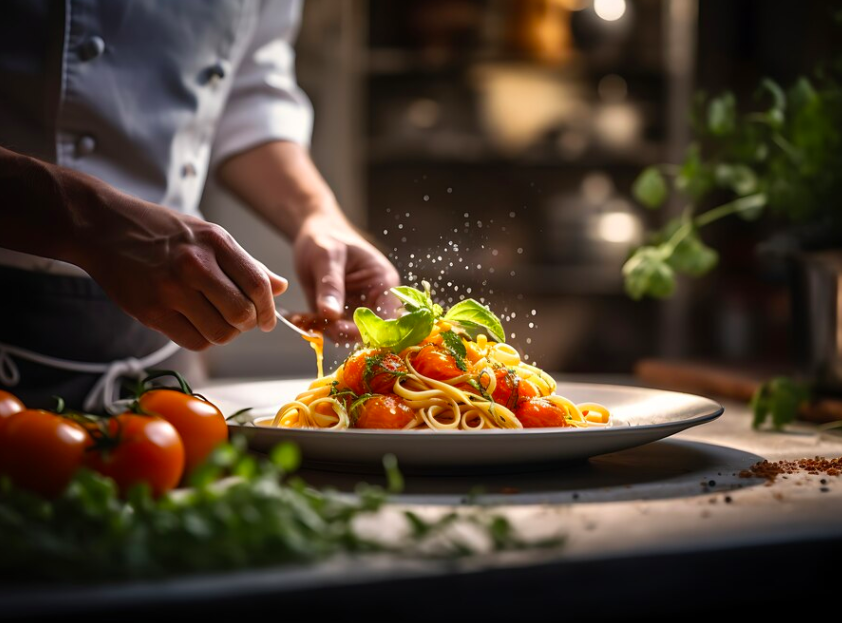The Science of Cooking: Exploring Molecular Gastronomy and Culinary Chemistry

In this article, we delve into the captivating world of molecular gastronomy, where culinary artistry meets the precise science of chemistry. Our aim is to provide a comprehensive overview of this intriguing culinary discipline, its principles, techniques, and its profound impact on modern gastronomy.
Understanding Molecular Gastronomy
Molecular gastronomy is a culinary approach that goes beyond traditional cooking methods. It involves the application of scientific principles to create dishes that push the boundaries of flavor, texture, and presentation. By analyzing and understanding the chemical processes that occur during cooking, chefs can craft truly remarkable and innovative culinary experiences.
The Key Principles
1. Spherification
Spherification is a hallmark technique of molecular gastronomy. It involves transforming liquids into delicate spheres with the use of sodium alginate and calcium chloride. This technique has given rise to visually stunning and burst-in-your-mouth creations like caviar made from fruit juices and cocktails encapsulated in spheres.
2. Emulsification
Emulsification is the art of blending typically immiscible liquids, like oil and water, to create stable and creamy textures. Techniques such as foaming and creating stable emulsions have revolutionized the world of sauces, dressings, and even ice creams, resulting in dishes that are both delightful and visually appealing.
3. Sous-Vide Cooking
Sous-vide cooking involves vacuum-sealing ingredients in plastic bags and cooking them at precise temperatures in a water bath. This method ensures even cooking, optimal flavor retention, and incredible tenderness in meats and vegetables.
Molecular Gastronomy's Influence on Cuisine
Molecular gastronomy has made a significant impact on the culinary world. Its fusion of science and artistry has led to the creation of entirely new dishes, as well as reimagined classics. It has also encouraged chefs to experiment with unusual ingredients, textures, and flavor combinations, paving the way for a gastronomic revolution.
Culinary Chemistry at Its Finest
Culinary chemistry is at the heart of molecular gastronomy. Understanding the chemical reactions that occur during cooking enables chefs to manipulate ingredients in novel ways. Here are some of the key chemical processes at play:
Maillard Reaction
The Maillard reaction is responsible for the browning of foods when exposed to heat. It creates complex flavor profiles and is the reason behind the crispy golden crust on bread and the delightful sear on a perfectly cooked steak.
Gelation
Gelation is the process of turning liquids into gels, often through the use of gelling agents like agar-agar or gelatin. This process is integral to creating unique textures and suspending ingredients within dishes.
Flavor Extraction
Understanding the chemistry of flavor extraction allows chefs to create intense and concentrated flavor profiles. Techniques like reduction and distillation enable them to extract the essence of ingredients, resulting in rich and aromatic sauces and infusions.
A Visual Representation
Here is a mermaid syntax diagram illustrating the interconnectedness of culinary chemistry and molecular gastronomy:
graph TD
A[Molecular Gastronomy] --> B[Spherification]
A[Molecular Gastronomy] --> C[Emulsification]
A[Molecular Gastronomy] --> D[Sous-Vide Cooking]
A[Molecular Gastronomy] --> E[Culinary Chemistry]
E[Culinary Chemistry] --> F[Maillard Reaction]
E[Culinary Chemistry] --> G[Gelation]
E[Culinary Chemistry] --> H[Flavor Extraction]
Conclusion
In conclusion, the world of molecular gastronomy, with its fusion of culinary artistry and scientific precision, offers a tantalizing glimpse into the future of cuisine. As chefs continue to push the boundaries of what's possible in the kitchen, the influence of molecular gastronomy and culinary chemistry on our dining experiences is sure to grow. We hope this article has provided you with a deep understanding of this fascinating culinary discipline and its potential to transform the way we approach food.


